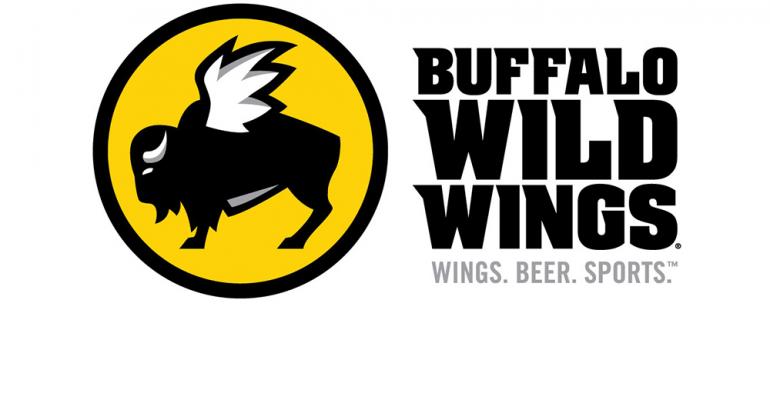Buffalo Wild Wings Inc. shareholders have seemingly had little to cheer about in 2017. Until Thursday, that is.
The Minneapolis-based chicken wing chain’s stock surged 21 percent after it easily bested investors’ expectations for earnings in the quarter ended Sept. 24. Going into the day, the stock had lost a third of its value this year on weak sales and uncertainty.
But analysts remain skeptical, in large part because those weak sales are still there.
Same-store sales at the chain fell 2.3 percent at company locations and 3.2 percent at franchise outlets. Traffic fell in part because the chain shifted from traditional wings to boneless wings for its popular Wings Tuesdays promotion — now known as “Boneless Twosdays.”
“Upon closer review, we don’t believe the results were as impressive as the headline numbers suggest, and sales trends indicate the concept has yet to see any meaningful recovery,” BTIG Analyst Peter Saleh wrote in a note.
For years, Buffalo Wild Wings was one of the best names in the casual dining sector, and in the restaurant business overall, at least as far as Wall Street was concerned. By 2015 the stock was trading above $200 a share.
But same-store sales have fallen all but one quarter since the first quarter of 2016, the longest stretch of bad sales since the company’s 2003 initial public offering. Investors turned on the company.
In May, activist investor Marcato Capital Management won three seats on the board.
But that, and the announced retirement of CEO Sally Smith, only seemed to make things worse. The company provided few updates on the search for Smith’s successor Wednesday.
Even after Thursday’s bounce, Buffalo Wild Wings’ stock is down about 19 percent on the year. At one point this year the stock was trading below $100 a share.
The earnings improvement was unexpected, and provided a rare pleasant surprise for the company’s investors in 2017. Buffalo Wild Wings’ earnings per share were $1.36 for the quarter. Analysts, on average, had expected 81 cents.
That performance came at a time when the company is facing an enormous, unexpected spike in chicken wing prices, which surged nearly 26 percent in the quarter. Traditional chicken wings are nearly 29 percent of Buffalo Wild Wings’ cost of sales, making them very important to the company’s profitability.
Buffalo Wild Wings shifted its Tuesday promotion to boneless wings, which the company said improved the chain’s cost of goods sold by 40 basis points.
The company was also able to cut labor costs. Labor costs were 31.4 percent of restaurant sales, down 70 basis points at a time when higher costs plague many chains. The company said it improved its pre-opening, closing and other procedures and saved $5.8 million in labor costs despite a 5-percent increase in wages.
The company also cut general and administrative and other expenses.
“We try to be very wise about where we pared back so all of the store labor and G&A are designed to focus on the efficiencies,” CFO Alex Ware said on the company’s earnings call Wednesday.
Still, even as the stock surged to about $122 a share Thursday, many analysts questioned the sustainability of the company’s earnings improvement.
“We believe 3Q featured significant one-time cost savings that we do not believe set the company up to beat 2018 [earnings],” Cowen Analyst Andrew Charles said.
One concern is the consumer reaction to the Tuesday wing promotion. Most franchisees have not shifted to the boneless promotion despite its lower costs, Charles noted.
Executives on the call said the shift to boneless did result in a traffic decline. They said that about 50 percent of the decline came from take-out checks under $10, “which are a very low margin transaction,” Smith said.
Still, several analysts were concerned about sales trends. The boneless shift and weak NFL ratings hurt same-store sales and traffic, and the restaurant industry and casual dining chains in general face challenges in the current environment.
The company has shifted more to takeout and delivery, which represented 19.2 percent of sales in the third quarter, up from 16.8 percent a year ago — but executives acknowledged that the growth slowed due to the shift to boneless.
“Although the earnings update was reassuring, we remain concerned about the persistent softness in [same-store sales], as better trends are needed to drive profitable growth in 2018 and beyond,” Baird Analyst David Tarantino wrote.
But Maxim Group Analyst Stephen Anderson, who has a Buy rating on the stock, believes the company could “return to break-even” same-store sales by the end of this year and “modestly positive” same-store sales by next year.
Contact Jonathan Maze at [email protected]
Follow him on Twitter at @jonathanmaze

